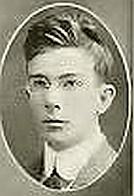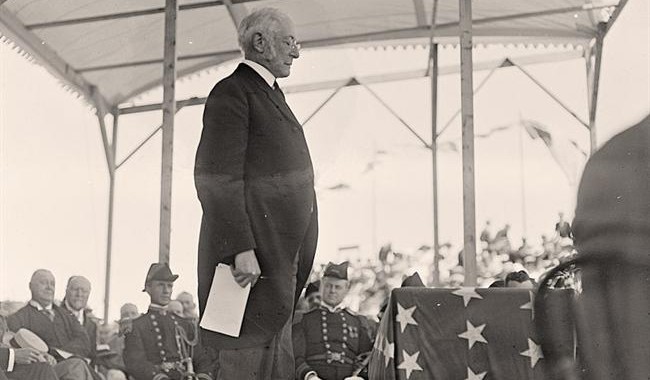
Newspaperman Charlie Mears,the narrator of Forsaken. (large photo) Charles William Eliot, president emeritus of Harvard University, speaks at the Soldiers and Sailors’ Monument, Provincetown, Massachusetts, in 1910.
In August 1912 Virginia Christian died in the electric chair at the penitentiary in Richmond, Virginia. When I talk about Forsaken, I tell readers this the point in the novel where it also becomes Charlie Mears’ story, because here is where his actions lead Jim Crow to single him out for retribution.
In an earlier blog, “Skeletons in the Closet,” I wrote about the role the University of Virginia played in racial purity laws and the eugenics movement. Another alma mater surprisingly played a significant role. Adam S. Cohen, in “Harvard’s Eugenics Era,” notes that while this chapter in Harvard history is often overlooked, “it is too important to be forgotten.”
The same month Virgie was electrocuted, Harvard president emeritus Charles William Eliot addressed the Harvard Club of San Francisco on what he saw as a grave danger, the mixing of racial groups. From Cohen’s essay:
“‘Each nation should keep its stock pure,’ Eliot told his San Francisco audience. ‘There should be no blending of races.’
“Eliot’s warning against mixing races—which for him included Irish Catholics marrying white Anglo-Saxon Protestants, Jews marrying Gentiles, and blacks marrying whites—was a central tenet of eugenics. The eugenics movement, which had begun in England and was rapidly spreading in the United States, insisted that human progress depended on promoting reproduction by the best people in the best combinations, and preventing the unworthy from having children.
“The former Harvard president was an outspoken supporter of another major eugenic cause of his time: forced sterilization of people declared to be ̓‘feebleminded,’ physically disabled, ‘criminalistic,’ or otherwise flawed. In 1907, Indiana had enacted the nation’s first eugenic sterilization law. Four years later, in a paper on ‘The Suppression of Moral Defectives,’ Eliot declared that Indiana’s law ‘blazed the trail which all free states must follow, if they would protect themselves from moral degeneracy.’
“He also lent his considerable prestige to the campaign to build a global eugenics movement. He was a vice president of the First International Eugenics Congress, which met in London in 1912 to hear papers on ‘racial suicide’ among Northern Europeans and similar topics. Two years later, Eliot helped organize the First National Conference on Race Betterment in Battle Creek, Michigan.
“None of these actions created problems for Eliot at Harvard, for a simple reason: they were well within the intellectual mainstream at the University.”
